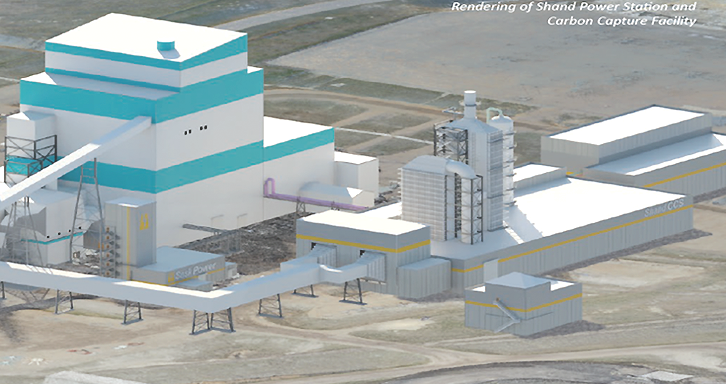It’s far from a done deal, but the future of SaskPower’s Shand Power Station looks a little better now that a much-anticipated report is out.
A feasibility study was released last week by the Regina-based and SaskPower-affiliated International CCS Knowledge Centre at an international conference in Edinburgh, Scotland. It shows the cost to retrofit Shand – a 300-megawatt, single unit, coal-fired power plant – with a large-scale carbon capture facility could be 67 per cent less per tonne than Unit 3 at the Boundary Dam Power Station.
The Shand facility would be designed to capture two million tonnes of CO2 per year, and would include a sulphur dioxide (SO2) abatement.
Dustin Duncan, the minister responsible for SaskPower, said the government was hopeful that the second generation of CCS technology, and the cost to deploy that technology, would be lower.
And while the 67 per cent per tonne decrease was a surprise, Duncan said he’s not surprised it will cost less.
“It looks like the second generation of the technology has improved in terms of the cost,” Duncan told the Mercury.
SaskPower has not had the opportunity to crunch the numbers to determine the exact costs of retrofitting Shand.
“There is a more detailed report that the knowledge centre is preparing for SaskPower. This report that was released by the knowledge centre is more of a high level look at what the next generation technology costs might look like when applied to a facility like Shand.”
More information is needed before a final decision is made on Shand and other units.
There won’t be a similar report at this time for Unit 6 at Boundary Dam, or Units 1 and 2 at the Poplar River Power Station. The focus was put on Shand because of its size at 300 megawatts, and its age, since it’s the newest of SaskPower’s remaining conventional coal units.
“It’s also the one that is most impacted by the change to federal regulations by this federal government, in terms of the shutdown date (in 2030),” said Duncan. “So that’s why it was felt best at this time to focus this next round of studies on Shand.”
SaskPower will eventually have to make a decision on all of those units.
“I think this gives us, at a high level, some encouraging news about the future of CCS development in that the capital costs look to be significantly lower than they were on BD3, which was the first generation technology,” said Duncan.
There has been a lot that has been learned about BD3 that went into this report, and that’s reflected in the capital costs.
“You’re going to find efficiencies when you look at a 300-megawatt unit compared to a 150,” said Duncan. “So there’s just going to be those natural efficiencies. There is obviously the space issue.”
Unit 3 at Boundary Dam was a pretty congested construction site, and it was an older facility. In any construction or capital, it will cost more going into an older space to renovate. Shand was also built to eventually have a second unit.
“On the technology side, SaskPower has learned a lot through BD3, and … I think the report indicates that that has helped to bring those numbers down.”
The report won’t cause SaskPower to rethink its decision to retire Units 4 and 5 at Boundary Dam, rather than retrofit them with CCS technology. The Crown corporation announced in July that those two units would come offline.
“There’s a lot of factors that went into the 4 and 5 decision,” said Duncan. “This study alone doesn’t cause any reason to reconsider that decision.”
The provincial government continues to wait on an equivalency agreement between SaskPower and the federal government. If such an agreement is reached, then Unit 4 would come offline in 2021, and Unit 5 would be offline three years later.
Without an agreement then those units will be shuttered at the end of 2019.
Duncan said he has heard that Catherine McKenna, the federal minister for the Environment and Climate Change, had a briefing on the equivalency agreement in late November.
“What we were told through the officials’ channels is that it seemed she was favourable to what has been negotiated to this point, and the next step was up to her to sign a memo that would see the equivalency agreement be gazetted by the Government of Canada,” said Duncan.
If it is published, then Duncan believes it would go through a 60-day window when it is made public. If there isn’t any feedback to cause her to want to make changes or scrap the agreement, then she would be in a position to sign it.
“We’re waiting here, hopefully before the end of December, to see the agreement in the gazette,” said Duncan.
While this is later in the process than SaskPower wanted, Duncan believes there is still enough time for the process to be completed, and to prevent Units 4 and 5 from closing next year.



